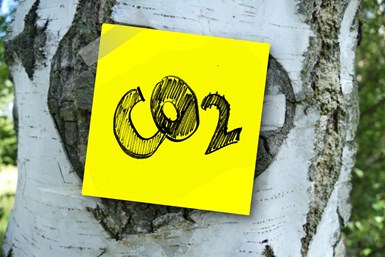Carbon Capture Emerges as Top Priority for Exxon, Others
Industrial Info is tracking more than $34 billion worth of active CCS projects across the United States, nearly half of which is attributed to projects in Texas and Louisiana.
Edited by Margo Ellis

Exxon Mobil Corporation does not expect the carbon capture and storage (CCS) market to slow down anytime soon, and the oil and gas giant is investing accordingly. ExxonMobil joins other U.S.-based energy leaders, such as Air Products and Chemicals Inc., Peabody Energy and CONSOL Energy Inc., in adopting the emissions-reduction technology, which captures CO2 from fossil-fuel energy generation and stores it underground, often to be reused in creating hydrogen and other products.
ExxonMobil estimates there will be a $4 trillion global market for CCS technology by 2050, which the company says will account for about 60% of the oil and gas market's value at that point in time. These remarks come on the heels of similar predictions by other industry players, including oil producer Occidental Petroleum Corporation, which in October estimated the global CCS market eventually could reach $5 trillion in value.
“This is a very dynamic space,” said Darren Woods, the chief executive officer of ExxonMobil, in a recent quarterly earnings-related conference call. “If you think back a couple of years ago, hydrogen and carbon capture — and frankly, even biofuels — were struggling to kind of be in the mix, in terms of potential solutions. Whereas today, I think people recognize the importance they're going to play going forward.”
ExxonMobil’s Low Carbon Solutions subsidiary expects to begin construction in the coming months on a carbon-capture project at its Shute Creek Gas Plant near Kemmerer, WY, which has two trains that process 740 standard cubic feet per day of natural gas. The first phase involves a series of equipment additions for the plant itself, such as a new flash vessel and electric motor compressor, as well as equipment additions for the sales facility and pump station; a new disposal well to handle excess CO2; and a nine-mile CO2 pipeline. These components would capture, transport and store up to 50 million standard cubic feet per day of CO2.
Read the complete article on The Navigatiir here.
RELATED CONTENT
-
Proper Care of Knife Gate and Slurry Valves
How to resolve—and avoid—field failures of knife gate and slurry valves
-
General Considerations for Control and Choke Valves Used in Offshore Oil and Gas Production
The application of control and choke valves used in offshore oil and gas production is a very broad field and in this article, some of the main considerations for valve selection will be addressed.
-
Dealing with Sand Erosion in Control and Choke Valves
Sand erosion in control and choke valves is a significant consideration offshore.








 Unloading large gate valve.jpg;maxWidth=214)


